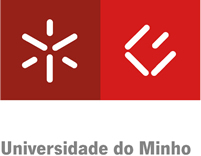Lições Político-Económicas da Transição Portuguesa para o Euro (1986-1999)
Political-Economic Lessons from the Portuguese Transition to the Euro (1986-1999)
DOI:
https://doi.org/10.21814/perspectivas.10Keywords:
BCE, Credibilidade, Euro, Europa, Integração Europeia, Par Ministro das Finanças/Governador, Portugal, UEMAbstract
We illustrate the economic transition to the euro in a political-economic context by building a bivariate confidence index based on Rocha de Sousa (1998, 1999a, b, 2001). In addition, we seek to understand whether the euro has functioned as an instrument of political and economic integration. The article has the following structure: section 1 describes the process of European monetary construction, section 2 illustrates the need for pre-euro fiscal consolidation, section 3 illustrates the notion of monetary credibility and the construction of a bivariate confidence index. section 4 illustrates the role of the ECB and the ESCB, section 5 assesses the impact of the euro on Portugal, and section 6 assesses the ten years after the creation of the euro using the report of the European Commission (EC, 2008), and finally section 7 concludes.
Resumo
Ilustramos a transição económica para o euro num contexto político-económico, construindo um índice de confiança bivariado, baseado em Rocha de Sousa (1998, 1999a,b, 2001). Para além disso procuramos compreender se o euro funcionou como um instrumento de integração político-económica. O artigo tem a seguinte estrutura: secção 1 descreve o processo de construção monetária Europeia, a secção 2 ilustra a necessidade de consolidação orçamental pré-euro, a secção 3 ilustra a noção de credibilidade monetária e a construção de um índice de confiança bivariado, a secção 4 ilustra o papel do BCE e do SEBC, a secção 5 avalia o impacto do euro em Portugal e a secção 6 avalia os dez anos após a criação do euro recorrendo ao relatório da Comissão Europeia (CE, 2008), e finalmente a secção 7 conclui.
Downloads
Downloads
Published
How to Cite
Issue
Section
License
Authors must be sure that they have permission to reproduce copyright material, prior to submitting their articles to this Journal.
Authors must secure permission if they have permission to reproduce figures, tables, or any extract from the text of another source. This applies to direct reproduction as well as to any derivative reproduction.
In assigning copyright, authors retain their right to use their own material elsewhere, provided that the Journal is acknowledged as the original place of publication, and the Editorial Team is notified in writing in advance.
Further information on copyright policy please contact info@perspectivasjournal.com








